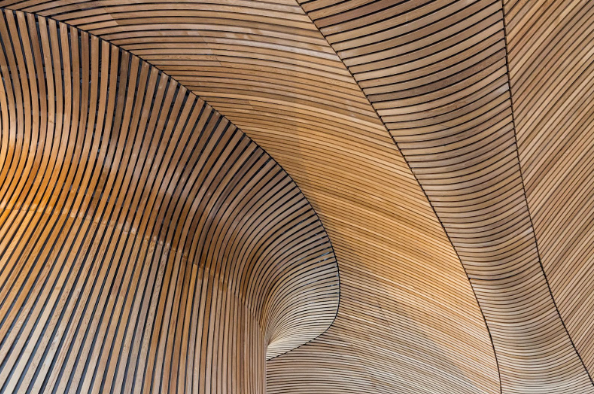Wales, a land celebrated for its rich history and stunning landscapes, is also becoming a hub for innovative architectural designs. Modern construction projects in Wales are increasingly incorporating Glass Reinforced Plastic (GRP) profiles, which offer a blend of aesthetic appeal and functional benefits. These projects showcase how GRP profiles can transform architectural visions into reality, providing durability, versatility, and sustainability.
The Millennium Coastal Path: A Blend of Beauty and Functionality
One of the standout examples of GRP profiles in Welsh architecture is the Millennium Coastal Path in Llanelli. This picturesque pathway stretches along the coastline, offering breathtaking views of the Gower Peninsula. GRP profiles have been used extensively in the construction of walkways, railings, and viewing platforms along the path.
The use of GRP profiles here is twofold: they provide a sleek, modern appearance that complements the natural beauty of the surroundings, and they offer exceptional durability in the face of harsh coastal weather conditions. Unlike traditional materials, GRP does not corrode or deteriorate when exposed to saltwater and high humidity, ensuring that the structures remain safe and visually appealing for years to come.
Cardiff’s Innovative Public Spaces
Cardiff, the vibrant capital of Wales, is at the forefront of integrating GRP profiles into its urban landscape. The city’s new public spaces, including parks and plazas, frequently feature GRP elements. These profiles are not only lightweight and easy to install but also highly customisable, allowing architects to experiment with bold and creative designs.
One notable project is the redevelopment of Central Square, a major public space near Cardiff Central railway station. GRP profiles have been used in the construction of benches, planters, and other street furniture, contributing to a cohesive and contemporary urban aesthetic. The versatility of GRP profiles allows for intricate design details that enhance the overall appeal of the space.
Sustainable Housing Projects in Swansea
Swansea is embracing sustainable construction practices, and GRP profiles are playing a crucial role in this green transformation. Sustainable housing developments in the city are incorporating GRP structural components to achieve energy efficiency and reduce environmental impact.
GRP profiles are used in facades, roofing, and cladding, providing excellent thermal insulation properties that help maintain comfortable indoor temperatures while reducing energy consumption. Additionally, the long lifespan and low maintenance requirements of GRP make it an ideal choice for sustainable construction. By minimising the need for frequent repairs and replacements, these housing projects contribute to long-term sustainability.
Engineered Composites: Pioneers of GRP Solutions
A key player in the adoption of GRP profiles in Wales is Engineered Composites. As the UK’s leading independent supplier of sustainable GRP products, Engineered Composites partners with various industries, including automotive, chemical, rail, water, construction, marine, manufacturing, transport infrastructure, telecommunications, and electrical sectors. With nearly thirty-five years of experience, they bring extensive knowledge and expertise to consistently deliver high-performance products at competitive prices.
Specialising in the procurement and distribution of GRP pultruded structural profiles, rods, tubes, grating and flooring, and GRP rebar, Engineered Composites ensures that each product meets stringent ISO 9001 quality standards. Their global manufacturing network allows them to offer the best price solutions without compromising on quality, ensuring the consistency and longevity of each component.
Enhancing Heritage Sites
In addition to modern constructions, GRP profiles are being used to revitalise heritage sites across Wales. The material’s ability to replicate traditional aesthetics while providing modern performance makes it ideal for restoring historical buildings. GRP profiles can mimic the appearance of wood or stone, ensuring that the restored structures maintain their historical integrity while benefiting from the durability and low maintenance of GRP.
Final Thoughts
The integration of GRP profiles in Welsh architectural projects highlights a growing trend towards innovative and sustainable construction. From coastal pathways and public spaces to sustainable housing and heritage restorations, GRP profiles offer a versatile and durable solution that meets the aesthetic and functional demands of modern architecture. With the support of industry leaders like Engineered Composites, Wales is poised to continue its journey towards a future where cutting-edge design and sustainability go hand in hand.







